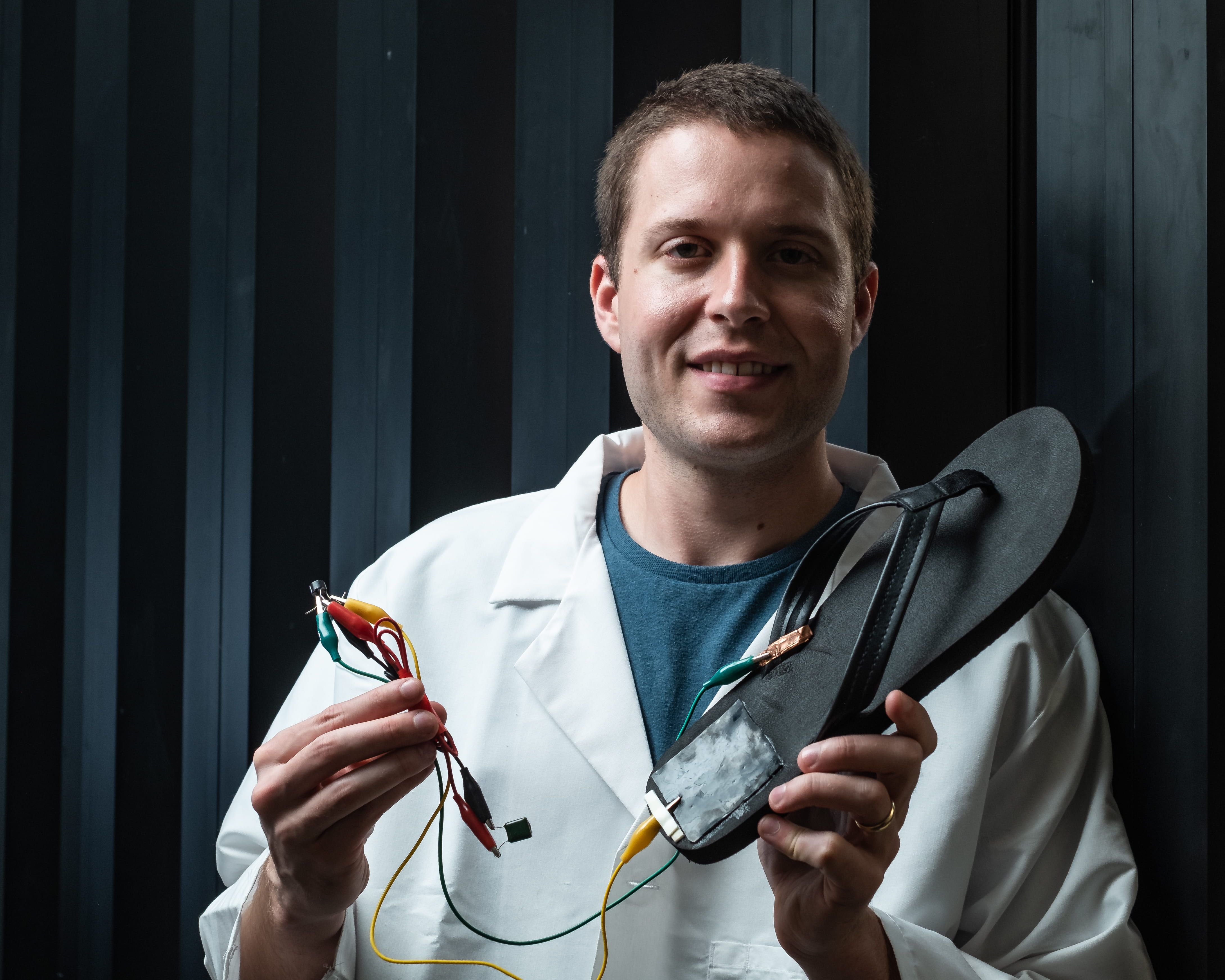Developed by a group at Rice University in Texas the devices exploit the properties of laser-induced graphene (LIG) a graphene foam produced when chemicals are heated on the surface of a polymer or other material with a laser.
Like rubbing a balloon on hair, putting LIG composites in contact with other surfaces produces static electricity that can be used to power devices.
In experiments, the researchers connected a folded strip of LIG to a string of light-emitting diodes and found that tapping the strip produced enough energy to make them flash. A larger piece of LIG embedded within a flip-flop let a wearer generate energy with every step, as the graphene composite's repeated contact with skin produced a current to charge a small capacitor.
"This could be a way to recharge small devices just by using the excess energy of heel strikes during walking, or swinging arm movements against the torso," said project leader Professor James Tour.
During their research - which is described in the American Chemical Society journal ACS Nano - the group explored a number of source materials for the LIG electrodes including polyimide, cork and got the best results from materials on the opposite ends of the triboelectric series, which quantifies their ability to generate static charge by contact electrification.
In the folding configuration, LIG from the tribo-negative polyimide was sprayed with a protecting coating of polyurethane, which also served as a tribo-positive material. When the electrodes were brought together, electrons transferred to the polyimide from the polyurethane.

Subsequent contact and separation drove charges that could be stored through an external circuit to rebalance the built-up static charge. The folding LIG generated about 1 kilovolt, and remained stable after 5,000 bending cycles.
The best configuration, with electrodes of the polyimide-LIG composite and aluminium, produced voltages above 3.5 kilovolts with a peak power of more than 8 milliwatts.
"The nanogenerator embedded within a flip-flop was able to store 0.22 millijoules of electrical energy on a capacitor after a 1-kilometer walk," said Rice postdoctoral researcher Michael Stanford, lead author of the paper. "This rate of energy storage is enough to power wearable sensors and electronics with human movement."




Nanogenerator consumes CO2 to generate electricity
Nice to see my my views being backed up by no less a figure than Sabine Hossenfelder https://youtu.be/QoJzs4fA4fo